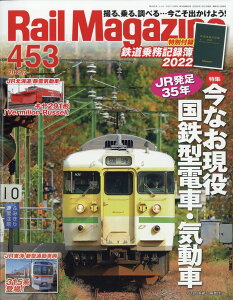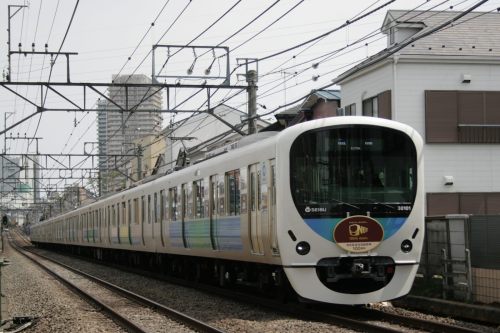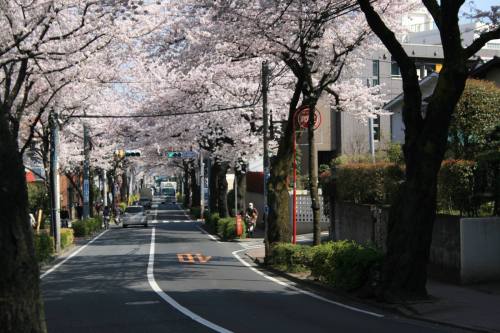PR
X
キーワードサーチ
▼キーワード検索
カレンダー
サイド自由欄
鉄道模型・鉄道グッズリンク
鉄道関連書籍リンク
時刻表最新号
JTB時刻表

JR時刻表

鉄道雑誌最新号
鉄道ファン

鉄道ジャーナル

鉄道ピクトリアル

鉄道ダイヤ情報

Rail Magazine

RM MODELS

j train

とれいん

鉄道模型趣味

N

旅と鉄道

楽天トラベルで旅に出よう

鉄道関連書籍リンク
時刻表最新号
JTB時刻表

JR時刻表

鉄道雑誌最新号
鉄道ファン

鉄道ジャーナル

鉄道ピクトリアル

鉄道ダイヤ情報

Rail Magazine

RM MODELS

j train

とれいん

鉄道模型趣味

N

旅と鉄道

楽天トラベルで旅に出よう
コメント新着
テーマ: 鉄道(23060)
カテゴリ: 鉄道日記

講演の全体的な流れとしては、西武鉄道の成り立ち、池袋線と新宿線の違いに始まり、西武鉄道および箱根土地が手掛けた宅地開発、そして現在の西武鉄道の話という展開となった。
現在の西武鉄道が、池袋線の前身の武蔵野鉄道と、現在の国分寺線を開業させた川越鉄道に端を発し、のちに新宿線を開業させる旧西武鉄道、武蔵野鉄道の系列会社で多摩湖線を開業させた多摩湖鉄道、多摩川線を開業させた多摩鉄道の各社が合併して誕生したという、複雑な歴史をたどりながら話は進められた。
花見が注目した西武鉄道の歴史知識
- 川越鉄道と甲武鉄道(JR中央線の前身)とが直通運転をしていた(中央線国有化で取りやめ)。
- 武蔵野鉄道(池袋線)が飯能市を中心とする地域の人々が、東京都内まで直通していた川越鉄道の開業で所沢市に活気を奪われたことに対抗して、飯能から山手線に接続する駅へと直通する路線として開業した。
- 上記の結果、川越鉄道→旧西武鉄道と武蔵野鉄道が熾烈な乗客の奪い合いを繰り広げた。その一例として、川越鉄道→旧西武鉄道の管轄駅だった所沢駅では、新宿線高田馬場開業後、駅員が池袋駅までの行き方を尋ねられると、高田馬場駅まで新宿線に乗って山手線に乗り換えるように案内しており、それが武蔵野鉄道の社員ともめ事を度々起こした。
- 池袋線と新宿線の輸送量の傾向の違いとして、池袋線はSL列車が走る非電化路線としてスタートしたことから駅間距離が長く、当初は沿線の町村の中心地に駅を1つ置き、1駅の利用客数が多かった。対して新宿線、特に所沢駅~高田馬場駅間は開業当初から通勤電車路線であったため、駅間距離が短く、駅を多く設置して多くの利用客を拾う戦略であった。先生は路線の特徴として前者を「汽車型」、後者を「電車型」と呼んでいた。
- 旧西武鉄道の筆頭株主が東武鉄道の育ての親として知られる根津嘉一郎であり、京王電気軌道(京王電鉄の前身)からも出資を受けていた。また根津は武蔵野鉄道にも出資し、東武鉄道系の会社が武蔵野鉄道にも送電していた。
- 池袋線飯能駅~吾野駅間は、浅野セメントの石灰石輸送を目的に、同社の手により半ば強引に開業させられ、武蔵野鉄道の甚だしい経営不振を招いた。その経営不振に陥った武蔵野鉄道の再建に手を差し伸べたのが、堤康次郎だった。
On 23rd, I went listening to a lecture by Taku Kitamura, a teacher at Tokyo Metropolitan Mitaka Junior High and High School, and who wrote several essays on "Railway Pictrial", at Shakujii-koen Furusato Museum in Nerima-ku, Tokyo, to celebrate 100th anniversary of Seibu Ikebukuro Line.
The lecture mainly featured the complex history of Seibu Railway, the difference between Seibu Ikebukuro Line and Shinjuku Line, the development of the residential area by Seibu Railway and Hakone Resorts Ltd. established by Tsutsumi, and Seibu Railway in the present.
His address first picked up the history of the formation of Seibu Railway, which was created by the merger of Musashino Railway (Ikebukuro Line in the present), former Seibu Railway, which had been first named Kawagoe Railway (Kokubunji Line and Shinjuku Line), Tamako Railway, affiliating company of Musashino Railway (Tamako Line), and Tama Railway (Tamagawa Line).
What I attracted in the lecture
- Kawagoe Railway (Kokubunji Line and Shinjuku Line between Higashi-murayama and Hon-kawagoe) used to go through Kobu Railway (JR Chuo Line) to Tokyo Metropolitan area until the nationalization of Kobu.
- Musashino Railway (Ikebukuro Line) was first planned and opened to revitalize Hanno City to carry goods to where Yamanote Line connected directly to confront Kawagoe Railway, which made merchandising in Tokorozawa City had risen.
- As the result of the upper two, at Tokorozawa Station, shared by both Kawagoe and Musashino but managed by Kawagoe Railway or former Seibu Railway, a station staff told the way to Ikebukuro via Shinjuku Line and JR Yamanote Line to keep passengers from switching to Ikebukuro Line, which had Musashino Railway's staffs in trouble.
- The difference of the passengers' tendency of Ikebukuro Line and Shinjuku Line was the number of the stations; at first those on Ikebukuro Line were built only at the centre of each town, which were gathered many passengers, because steam locomotive train's slow acceleration, but those on Shinjuku Line, especially between Tokorozawa and Takadanobaba, originally opened as a electrified railway, were at short intervals, the more stations might make the more passengers to be useful for commuting.
- The major shareholder of former Seibu Railway was Kaichiro Nezu, who also be known as the first president to create the growth of Tobu Railway, and Keio Corporation used to invest some money. In addition, Nezu also invest in Musashino Railway and Tobu's related company send electricity to trains on Musashino Railway.
- Ikebukuro Line between Hanno and Agano was built by force of Asano Cement Company to carry lime-stone mined in Agano, which made terrible financial trouble. Musashino Railway recovered from slumping business by a support of Yasujiro Tsutsumi.

次に沿線の宅地開発の話として、大泉学園、小平(一橋学園)、国立といった西武鉄道(武蔵野鉄道・多摩湖鉄道)および箱根土地(のちの西武鉄道のかつての親会社となるコクド 現在はプリンスホテルに吸収合併)が開発した住宅地・学園都市の話となった。
大泉学園は箱根土地、すなわち堤康次郎が初めて武蔵野鉄道沿線で行った学園都市計画であり、大泉学園駅は堤が武蔵野鉄道に寄贈する形で1924(大正13)年に開業した。これが堤と武蔵野鉄道との最初の結びつきである。同地へ一橋大学の誘致を計画したものの、関東大震災の影響で計画が変更となり、小平市の小平学園都市(一橋学園)と国立の2箇所へ分散させて移転が決まったため、大泉学園は「幻の学園都市」となった。当初は投資(賃貸)目的で家を買う人がいたもののあまり売れず、大泉学園の住宅購入者向けに、武蔵野鉄道の大泉学園駅~池袋駅の3年間優待乗車券がプレゼントされた。JR中央線国立駅も同様に、堤が鉄道会社に寄贈する形で開業した。
今回の講演は、西武鉄道の歴史と沿線の都市開発について、さまざまな話を聴くことができて素晴らしい機会となった。また同様の他の鉄道をテーマにした講演があれば、ぜひともそちらも聴きに行きたい。
Oizumi-gakuen Station was built and doneted by Hakone Resorts Ltd. in 1924 and it was the first relation between Musashino Railway and Tsutsumi. Tsutsumi first planned to make Hitotsubashi University moved there, but the Great Kanto Earthquake in 1923 turned the plan got cancelled and moved to Kodaira and Kunitachi. At first, because the sales of the newly-built houses in Oizumi-gakuen wouldn't grow, Musashino Railway presented the persons who bought them the three-year discount ticket between Oizumi-gakuen and Ikebukuro. Kunitachi Station on JR Chuo Line was also built in the same way.
It was a good opportunity to hear the story of a railway history. I would like to join the same kind of lecture again.
お気に入りの記事を「いいね!」で応援しよう
[鉄道日記] カテゴリの最新記事
-
お台場開催の鉄道フェスティバルへ Oct 13, 2024 コメント(2)
-
東急5050系5178Fを撮る Jun 26, 2024 コメント(2)
-
東急5050系「新幹線デザインのラッピング… Jun 26, 2024
【毎日開催】
15記事にいいね!で1ポイント
10秒滞在
いいね!
--
/
--
© Rakuten Group, Inc.








